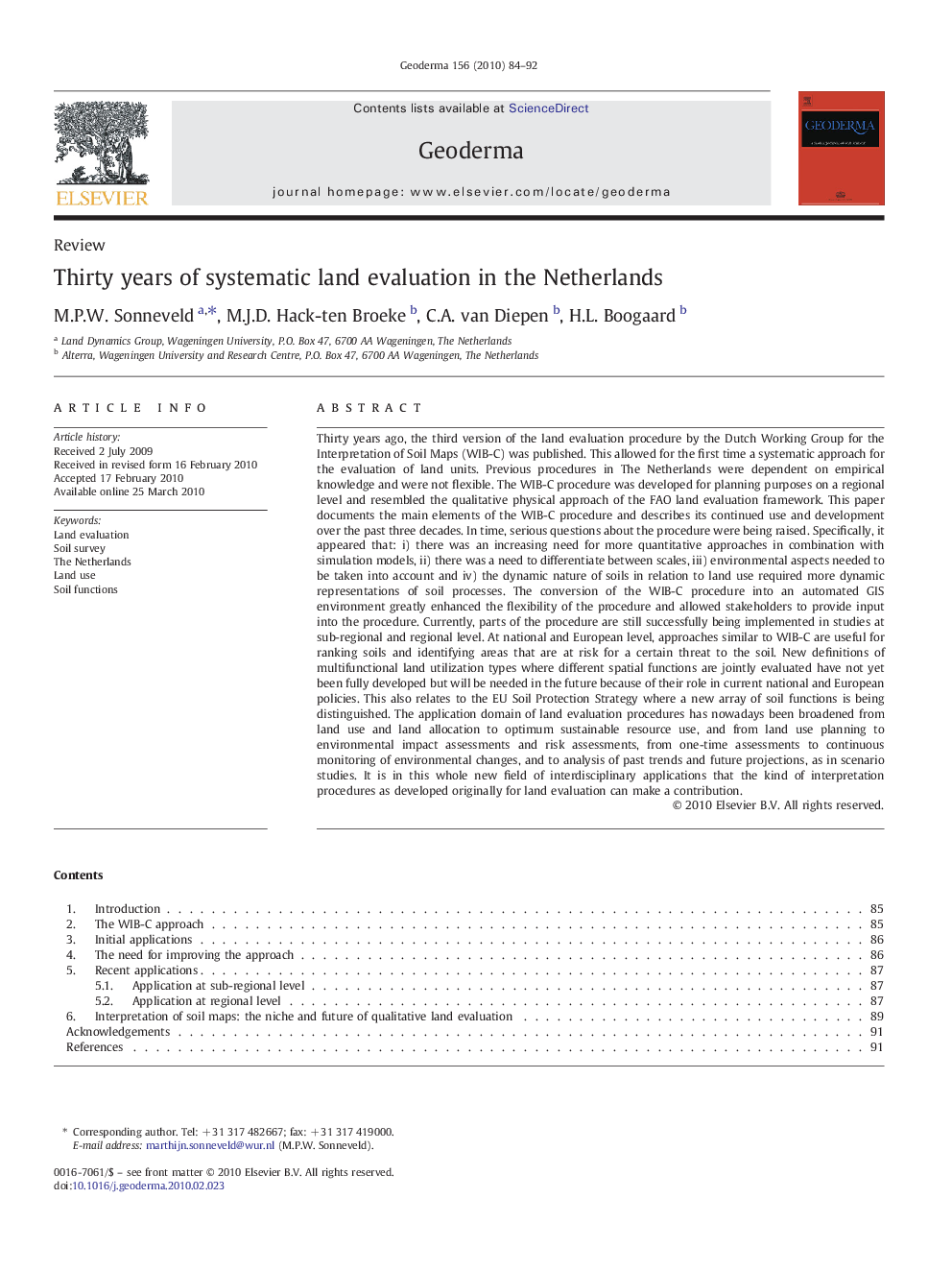| کد مقاله | کد نشریه | سال انتشار | مقاله انگلیسی | نسخه تمام متن |
|---|---|---|---|---|
| 4574450 | 1629521 | 2010 | 9 صفحه PDF | دانلود رایگان |
عنوان انگلیسی مقاله ISI
Thirty years of systematic land evaluation in the Netherlands
دانلود مقاله + سفارش ترجمه
دانلود مقاله ISI انگلیسی
رایگان برای ایرانیان
کلمات کلیدی
موضوعات مرتبط
مهندسی و علوم پایه
علوم زمین و سیارات
فرآیندهای سطح زمین
پیش نمایش صفحه اول مقاله

چکیده انگلیسی
Thirty years ago, the third version of the land evaluation procedure by the Dutch Working Group for the Interpretation of Soil Maps (WIB-C) was published. This allowed for the first time a systematic approach for the evaluation of land units. Previous procedures in The Netherlands were dependent on empirical knowledge and were not flexible. The WIB-C procedure was developed for planning purposes on a regional level and resembled the qualitative physical approach of the FAO land evaluation framework. This paper documents the main elements of the WIB-C procedure and describes its continued use and development over the past three decades. In time, serious questions about the procedure were being raised. Specifically, it appeared that: i) there was an increasing need for more quantitative approaches in combination with simulation models, ii) there was a need to differentiate between scales, iii) environmental aspects needed to be taken into account and iv) the dynamic nature of soils in relation to land use required more dynamic representations of soil processes. The conversion of the WIB-C procedure into an automated GIS environment greatly enhanced the flexibility of the procedure and allowed stakeholders to provide input into the procedure. Currently, parts of the procedure are still successfully being implemented in studies at sub-regional and regional level. At national and European level, approaches similar to WIB-C are useful for ranking soils and identifying areas that are at risk for a certain threat to the soil. New definitions of multifunctional land utilization types where different spatial functions are jointly evaluated have not yet been fully developed but will be needed in the future because of their role in current national and European policies. This also relates to the EU Soil Protection Strategy where a new array of soil functions is being distinguished. The application domain of land evaluation procedures has nowadays been broadened from land use and land allocation to optimum sustainable resource use, and from land use planning to environmental impact assessments and risk assessments, from one-time assessments to continuous monitoring of environmental changes, and to analysis of past trends and future projections, as in scenario studies. It is in this whole new field of interdisciplinary applications that the kind of interpretation procedures as developed originally for land evaluation can make a contribution.
ناشر
Database: Elsevier - ScienceDirect (ساینس دایرکت)
Journal: Geoderma - Volume 156, Issues 3â4, 15 May 2010, Pages 84-92
Journal: Geoderma - Volume 156, Issues 3â4, 15 May 2010, Pages 84-92
نویسندگان
M.P.W. Sonneveld, M.J.D. Hack-ten Broeke, C.A. van Diepen, H.L. Boogaard,